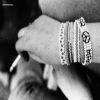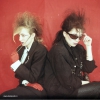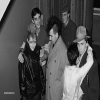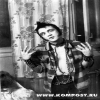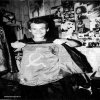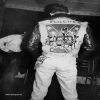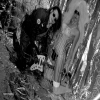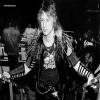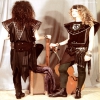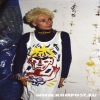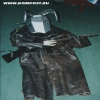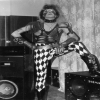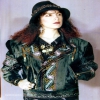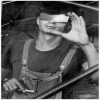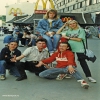
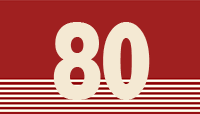
Subculture
|
Street fashion of the early 1980s was of a particular character until 1983. It came down to the style of hippies and beatniks, with the beginnings of "Italian-American" casual style to the general population who stood in line for jeans and velvet. Even more rarely could be seen on the streets the representatives of the Soviet high class, who preferred imported items from Dior or other foreign consumer goods. Fashionable women of the middle class, who managed to sew things by the pattern in domestic studios, or sewn from the image seen in the movie, wore these clothes on special occasion, which was visiting someone and theaters. For these reasons, any manifestation of independent youth fashion against the brown-grey capitals of the masses looked very bright and defiant, and subjected to pressure. Despite this, at the beginning of the decade, in both capitals began to appear people in music lovers’ T-shirts and attributes of subcultural styles (new wave and heavy metal). Since the beginning of Perestroika and the partial legalization of music styles preferences, the city streets were decorated with boiled denim fashion maniacs and breaker outfit. The subcultural people, who established their own market of attributes, had already formed their ideas about the standards of appearance. The main references here were their own views and fragmentary data from covers and pages of foreign magazines, as well as their own (somewhat naive and ludicrous) artistic endeavors. Total deficit only contributed to the development of handmade and vintage styles. Already at the time of subcultural and ideological breakthrough, street fashion could be divided into а) artistic subcultural (punk and fashionable suits, which were indispensable attribute of artistic outrageousness) б) subcultural (stylistically music lover), ordinariness compensated by street performances в) black market, to which tended the main unadvanced population, the female audience of discotheques and the “irons” themselves - black-marketers. Separately were presented a few costumes of some radical informal groups. However, while for many musicians it was just a scenic image, for the street subcultures members, always occupying the front rows of concert venues, and enjoying the free passage, their own "stage" image was an everyday affair and was a part of everyday street adventures. But it developed into an outline subcultural DIY (do itself), and fell into the category of styles, with what you can familiarize in the appropriate sections of the site. The term “avant-garde fashion” is acceptable for the global industry in 1970-80s, but for the Soviet reality had no practical meaning because of lack of the collective understanding of fashion and of mainstream, which could venerate the notorious "avant-garde". So much so, as there was at least some alternative to all that was offered on the shelves - just divorced from the realities of Soviet, emotional, creative, but which had a grateful audience. Alternative fashion was wild and untamed, appearing suddenly, like a chemical reaction of various groups of underground artists, who with a lightning speed have won their own space on the rock scene in squats and on the official podium. The very term formally entrenched behind this striking phenomenon in 1988, appearing first on the pages of the Polish magazine Mlodosc. In fact, introducing a theater of new esthetic mode, this phenomenon was on the verge of performance and design show. Rumors, ideas and legends, all embodied by designers and mods in extravagant ways on amateur catwalks and on the streets. And lasted until the arrival of glossy foreign fashion magazines of the 1990s, in the new Russia, to differentiate at a club performance, street and squatter alternative, reaching its climax in the form of Riga Assembly of alternative fashion, most of which members went on their way in the fashion and design industry.  go back to "Fashion" go back to "Fashion" |

